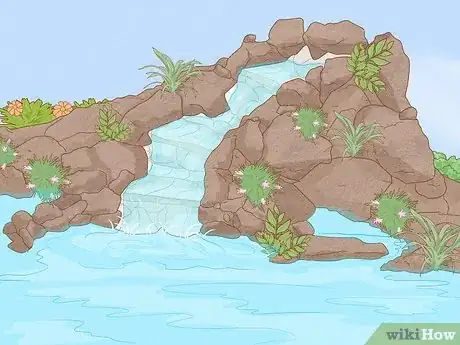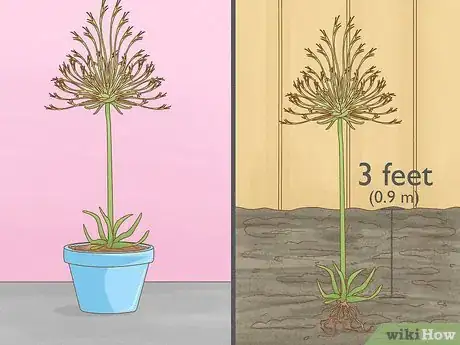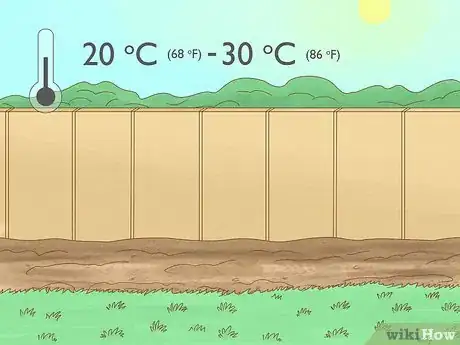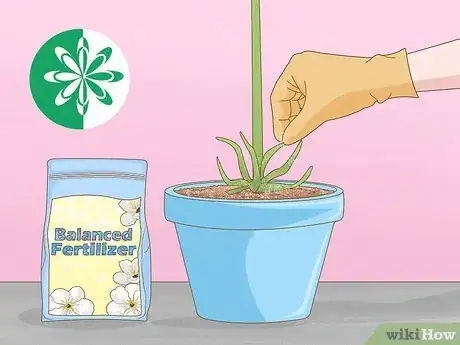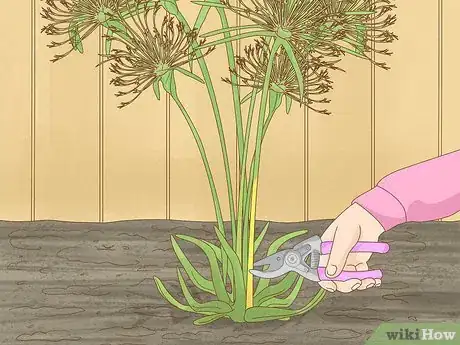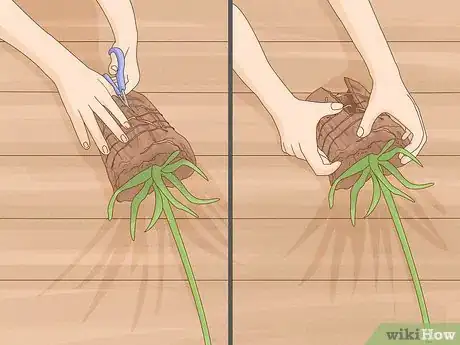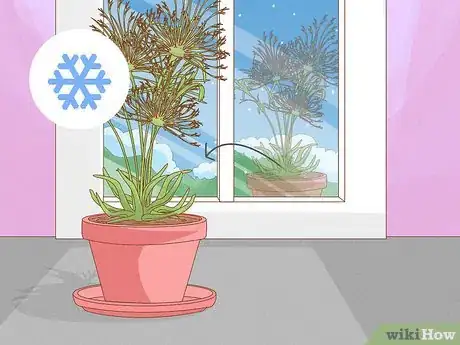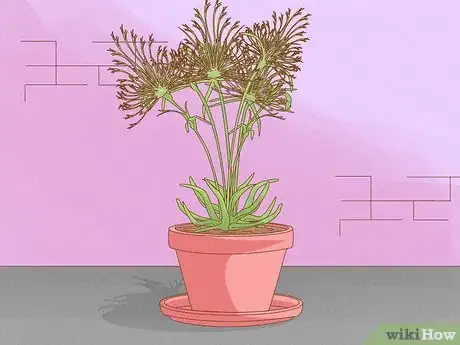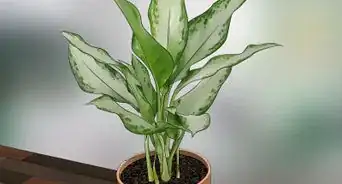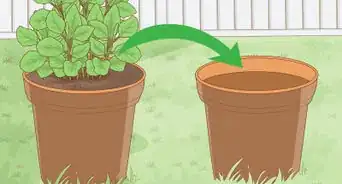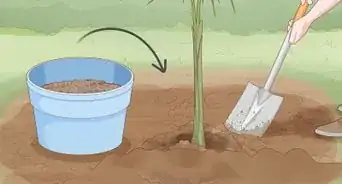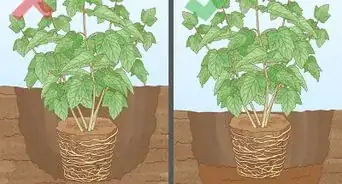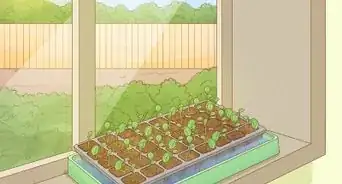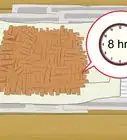wikiHow is a “wiki,” similar to Wikipedia, which means that many of our articles are co-written by multiple authors. To create this article, 10 people, some anonymous, worked to edit and improve it over time.
wikiHow marks an article as reader-approved once it receives enough positive feedback. In this case, 85% of readers who voted found the article helpful, earning it our reader-approved status.
This article has been viewed 136,739 times.
Learn more...
Papyrus plant belong to the genus Cyperus. This tall, robust, leafless aquatic plant can grow 4 to 5 m (13 to 16 ft) high. It forms a grass-like clump of triangular green stems that rise up from thick, woody rhizomes. The stems are rigid and triangular and have white pith inside. The pith is the source of papyrus paper.
Papyrus plants were one of the most important plants in ancient civilized Egypt and used for paper, woven goods, food and fragrance.
Steps
-
1Know that papyrus grass is considered a sedge and prefers moist, warm environments and hence suitable for water gardens and bogs. You can grow papyrus from seed or division. In most zones, Papyrus is an annual or half- hardy perennial.[1]
-
2Plant it in appropriate environments. Papyrus is usually planted by rhizomes in moist, fertile soil in pots and then submerged in an aquatic environment, or it can be planted directly into 3 feet (0.9 m) of muddy soil to hold the heavy stems upright.[2]Advertisement
-
3Consider the zone you're trying to plant in. Papyrus plant is suitable for United States Department of Agriculture zones 9 to 11.[3] Mulching in zone 8 can help protect the roots but the foliage will mostly die in winter.
-
4Pick a good location based on temperature and sun exposure. Papyrus grass needs full exposure to sun for growth but can also be raised in partial shade. They also need to be sheltered from strong winds and for best effect they should be allowed to form a large colony. Papyrus can tolerate annual temperatures of 20 °C (68 °F) to 30 °C (86 °F)[4]
-
5Use a balanced fertilizer in spring to support the growth of the stems. Treat papyrus with a balanced liquid fertilizer diluted by half, every month in spring. Use the fertilizer during the time of watering to avoid fertilizer burn.
-
6Cut the plant in the autumn when the stems begin to turn yellow. Dig out the roots of the plant and remove the excess soil. If the plant was grown in a water garden pull the pot out from water and allow it to drain. After it drains, remove the plant from the pot and trim the roots. Cut the rhizomes which are discolored or damaged.
-
7Propagate papyrus with seeds or division. You can cut the papyrus rhizomes into groups of two or three. Then repot the divisions and grow them as individual plants.[5]
-
8Keep the plants out of winter weather. Papyrus has no frost tolerance and should be moved indoors for the winter. Supply artificial light if you can't give an indoor papyrus plant enough sun during the winter.
-
9The papyrus plant can also be kept it in large pots with saucers to hold water. In the winter in Zone 8A and 8B it will totally die down, but if it is in a protected place, such as near the house, it always returns in the spring. It can also be rooted in water.
Community Q&A
-
QuestionI have a plant but need to keep it indoors. It has little white insects on the stems and foliage. How can I eradicate these insects?
 Community AnswerSpritz with a solution of dish washing detergent and water. They'll die. Don't over-wet the plant. Keep an eye on it to make sure all the insects die. Re-treat as necessary.
Community AnswerSpritz with a solution of dish washing detergent and water. They'll die. Don't over-wet the plant. Keep an eye on it to make sure all the insects die. Re-treat as necessary. -
QuestionWhy is my papyrus drooping over?
 Community AnswerI have used tomato cages to keep the plants upright when this happens. Make sure they are getting ample water.
Community AnswerI have used tomato cages to keep the plants upright when this happens. Make sure they are getting ample water. -
QuestionWhere are zones seven and eight in the United States?
 Community AnswerCalifornia, southern tip of Nevada, Arizona, New Mexico, Texas, southern Arkansas, Louisiana, Mississippi, Alabama, Georgia, Florida, South Carolina, and southeastern North Carolina.
Community AnswerCalifornia, southern tip of Nevada, Arizona, New Mexico, Texas, southern Arkansas, Louisiana, Mississippi, Alabama, Georgia, Florida, South Carolina, and southeastern North Carolina.
Warnings
- The plant needs to be kept moist.⧼thumbs_response⧽
- Papyrus seeds do not germinate easily and can take a month or more to sprout.⧼thumbs_response⧽
- Papyrus plants cannot survive winters with freezing temperatures. Hence they must be taken indoors during winter and supply artificial light if exposure to sun is not possible.⧼thumbs_response⧽
References
- ↑ https://wimastergardener.org/article/papyrus-cyperus-papyrus/
- ↑ https://www.bhg.com/gardening/flowers/perennials/perennials-for-wet-soil/
- ↑ https://biocleanenvironmental.com/wp-content/uploads/2018/11/Hardy-Zone-9-MWS-Plant-Selection.pdf
- ↑ https://www.nature-and-garden.com/gardening/papyrus-cyperus.html
- ↑ https://www.youtube.com/watch?v=A03wKoHqFcI
